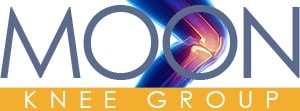by Elizabeth Hofheinz, M.P.H., M.Ed.
Published in OrthoSpineNews
July 17, 2020
Years ago, a young surgeon just out of orthopedic fellowship hit a moonshot when he decided to do something no one else had ever attempted in sports medicine—create a massive database that would help determine predictors of anterior cruciate ligament reconstruction (ACLR) outcomes as well as the long-term outcomes of ACLR.
Indeed, research emanating from the Multicenter Orthopaedic Outcomes Network (MOON) Knee Group, a project initiated in 2002, has shed substantial light on the long-term outcomes of ACLR. Comprised of 19 physician-researchers from seven leading health care institutions, MOON now contains over 3,500 cases and has resulted in more than 60 published papers. And they have a nearly 80% follow-up rate at two, six and 10 years. It is the largest prospective longitudinal ACL reconstruction cohort in the country.
The principal investigator on the MOON project for over 10 years, Kurt Spindler, M.D. is Vice Chair for Research in Cleveland Clinic’s Orthopedic and Rheumatologic Institute and Director of the Amy and David Krohn Family Orthopaedic Outcomes Center (OOC). He told OSN, “The MOON effort can be traced back to a small prospective cohort study with 54 patients who underwent acute ACLR at Cleveland Clinic during my fellowship year. When it became clear that we would need many more patients in order to accurately determine predictors or risk factors of ACLR outcomes as well as ACLR’s long-term impact, I decided to move forward with a multicenter project.”
Dr. Spindler began this work when he accepted a position as an assistant professor at Vanderbilt University, establishing the Vanderbilt Sports Medicine-Cleveland Clinic Foundation ACLR Registry along with Cleveland Clinic colleagues Richard Parker, M.D. and Jack Andrish, M.D. Eventually obtaining a Prospective Clinical Research Grant from the Orthopaedic Research and Education Foundation (OREF), the burgeoning group of researchers at three institutions went on to produce eight related published papers.
Dr. Spindler: “It is unlikely that we will ever be able to guarantee a complete return to function after ACLR. However, our goal has always been to establish predictive models that can guide and inform treatments, and result in improved, patient-specific outcomes such as return to sports, pain, function, and early arthritis.”
They Have Done Just That
“By pooling our efforts in a systematic, ongoing effort, the MOON group has resulted in a vast amount of knowledge that has improved the lives of tens of thousands of patients,” says Dr. Spindler.
Concerning some of their recent work, Dr. Spindler states, “Several years ago, we published a cohort study involving 2,683 patients where we examined the factors involved in ipsilateral and contralateral ACL tears after primary ACLR. We wanted to find out how well people do with pain during sports activities. Some people reinjure their surgical knee and we know they often tear the other side as well. We discovered that when the younger age groups are concerned—high school and college students—some surgeons are using bone-patellar tendon-bone (BTB) autograft and others are using hamstring autograft. Our team wanted to see what causes failure on the surgical side and what causes failure on the contralateral side.”
Dr. Spindler and his colleagues found that the odds of an ipsilateral ACL retear were 5.2 times greater for an allograft as compared with a BTB autograft; the odds of retear were not significantly different between BTB autograft and hamstring autograft.
“Numerous considerations such as age, sport, BMI, gender, and activity level (which determines how much someone cuts and pivots per week) all factor into the retear equation. Additionally, if someone has an extremely loose knee with a very high-grade pivot shift or the highest grade on the Lachman test then that is a factor as well.”
So they did something that no one else had done in sports medicine… they built a calculator. This was an additional study to the aforementioned in we only looked at our high school and college athletes who are at the highest risk of reinjury/tear.
“The ACL Autograft Re-Tear Risk Calculator enables patients to input their age (14-22), gender, height, weight, sport, and movements (running, cutting, deceleration, pivoting). The tool predicts the six-year failure risk for each autograft (shown for normal knee laxity and high-grade knee laxity). The user obtains results in the form of a color-coded QR code; anything in green means there is less than a 3% failure rate, yellow means there is between 3-5% risk of failure, while red indicates a failure rate of more than 5%.”
Before this work, says Dr. Spindler, if he asked a colleague, “What is the best graft for this age group?” they couldn’t say.
“If I am treating a 14-year-old football player and he has a high ipsilateral failure rate and high contralateral failure rate, then that person has to do sport-specific training. But if I have an 18-year-old lacrosse player who is has a very low risk of reinjury but is scared to get back on the field, I can tell him or her, ‘Why are you afraid? Your risk of reinjury is only 2-3%.’”
Funded with four grants from the National Institutes of Health since 2006, the MOON Group has helped bring the most advanced ACL care to athletes and non-athletes alike.

